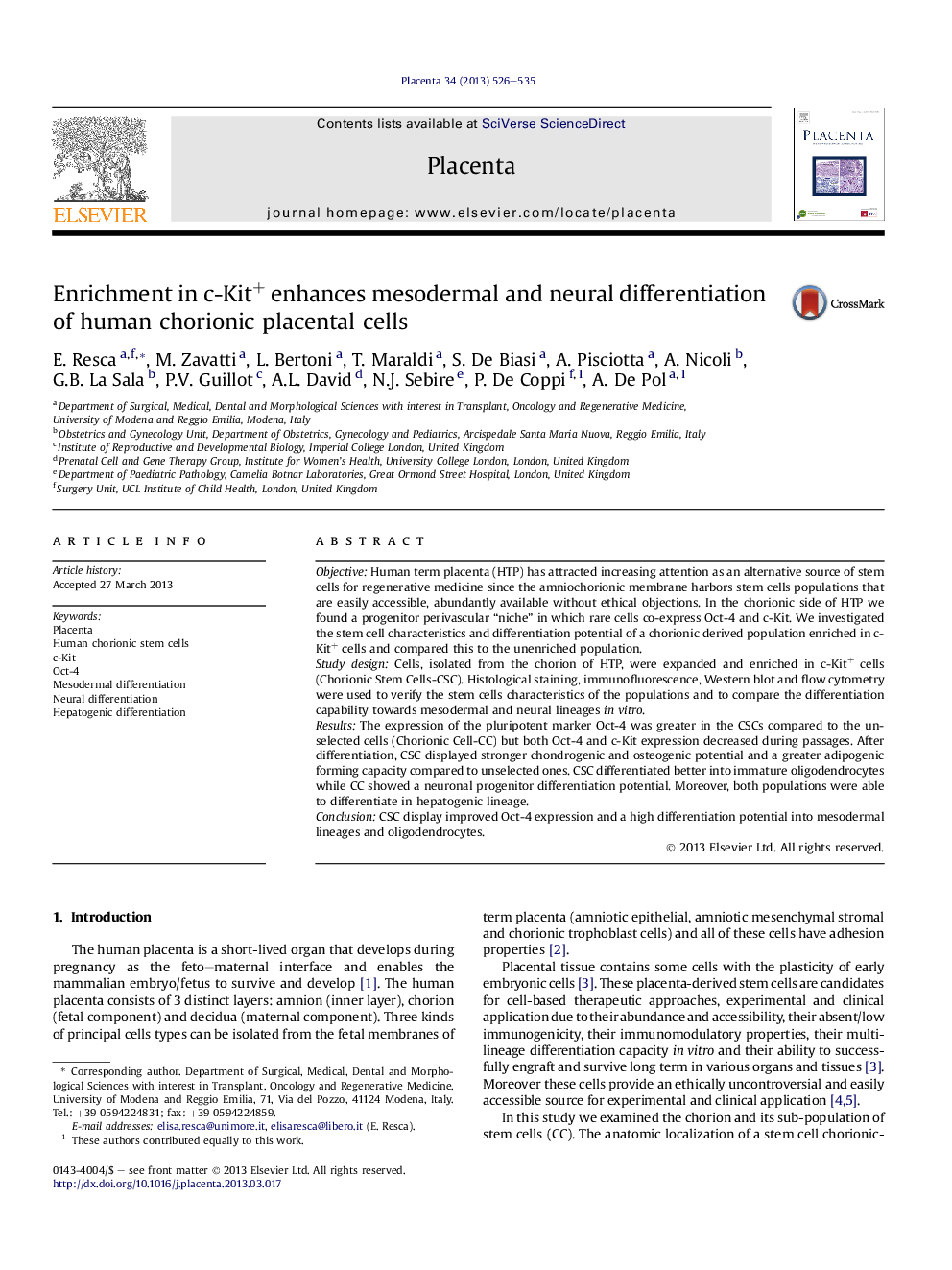| Article ID | Journal | Published Year | Pages | File Type |
|---|---|---|---|---|
| 2789062 | Placenta | 2013 | 10 Pages |
ObjectiveHuman term placenta (HTP) has attracted increasing attention as an alternative source of stem cells for regenerative medicine since the amniochorionic membrane harbors stem cells populations that are easily accessible, abundantly available without ethical objections. In the chorionic side of HTP we found a progenitor perivascular “niche” in which rare cells co-express Oct-4 and c-Kit. We investigated the stem cell characteristics and differentiation potential of a chorionic derived population enriched in c-Kit+ cells and compared this to the unenriched population.Study designCells, isolated from the chorion of HTP, were expanded and enriched in c-Kit+ cells (Chorionic Stem Cells-CSC). Histological staining, immunofluorescence, Western blot and flow cytometry were used to verify the stem cells characteristics of the populations and to compare the differentiation capability towards mesodermal and neural lineages in vitro.ResultsThe expression of the pluripotent marker Oct-4 was greater in the CSCs compared to the unselected cells (Chorionic Cell-CC) but both Oct-4 and c-Kit expression decreased during passages. After differentiation, CSC displayed stronger chondrogenic and osteogenic potential and a greater adipogenic forming capacity compared to unselected ones. CSC differentiated better into immature oligodendrocytes while CC showed a neuronal progenitor differentiation potential. Moreover, both populations were able to differentiate in hepatogenic lineage.ConclusionCSC display improved Oct-4 expression and a high differentiation potential into mesodermal lineages and oligodendrocytes.
